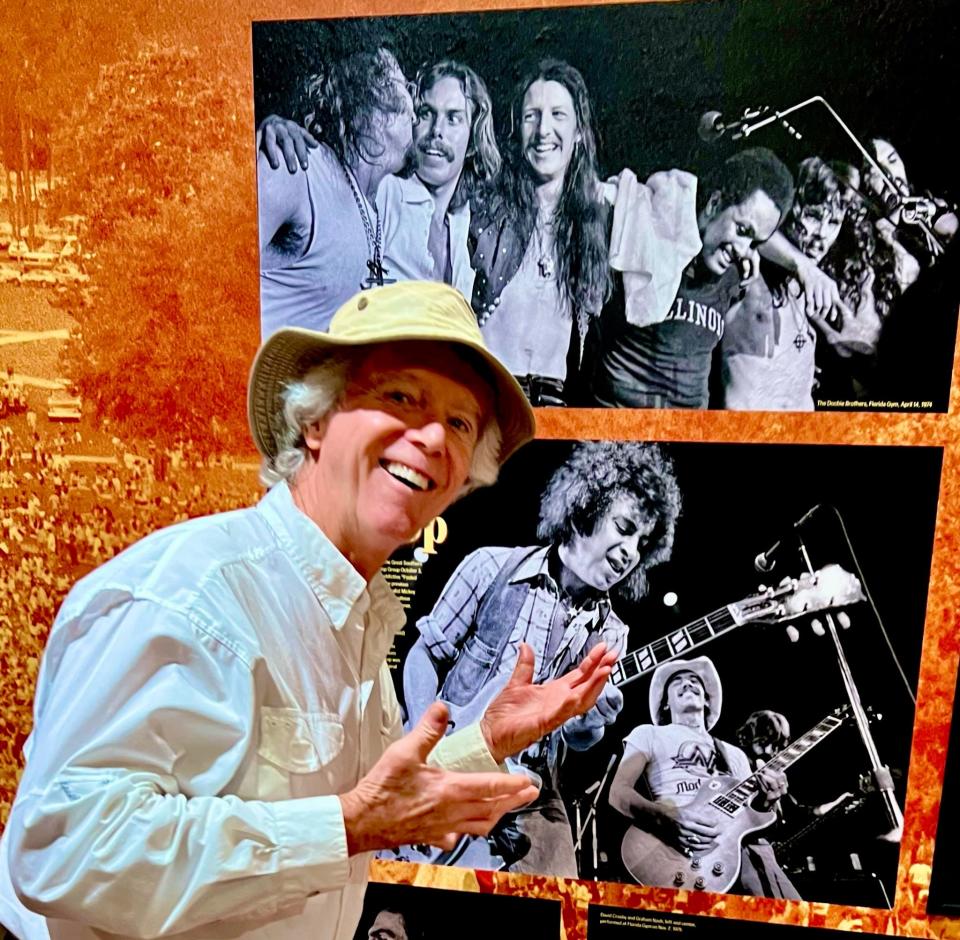Great Southern Music Hall revolutionized the concert experience in Gainesville
The arrival of the Great Southern Music Hall in 1974 meant that concerts, in Gainesville, need not be sweaty, quasi-tribal affairs with music lovers jammed knee-to-elbow into an outdoor space. For those who weren’t into the Woodstock aesthetic, attending a concert — even inside the boomy University of Florida Gym, which was not air-conditioned — could be a primitive and sometimes scary proposition.
With its plush (for the time) theater seats, chilly AC, fixed stage and state-of-the-art sound and light systems, the Great Southern Music Hall revolutionized — and civilized — the concert experience in Gainesville.
Perhaps most significantly, you could buy a drink there. All events on the UF campus were as dry as the Sahara in those days.

The 1920s-vintage Florida Theatre had fallen on hard times, and would doubtless have a date with the wrecking ball, had Jeffrey Meldon and Jim Forsman not come along when they did with a vision for what would become the Great Southern Music Hall.
Because neither of the co-owners had any prior experience in venue management, Great Southern, by rights, should not have been a success.
It was Ray Charles who advised them to keep the thermostat high and the popcorn salty, so the customers would stay thirsty and buy more beer. That had never occurred to them.
The Great Southern Music Hall lasted less than a decade, under that name; by that point the formidable Meldon/Forsman team, busy with other things, had already pulled out.

That era of innovation — from the opening in ’74 through the original duo’s final full year, 1978 — represents a seismic shift in the way live music was presented in Florida’s premier college town.
The acts brought in were not, by and large, superstars. But in that era, FM radio was king, and Meldon — along with Albert Teabagy, who soon took over the talent-booking — went after artists who might not have been high on the charts, but were definitely on local hipsters’ radar, thanks to the radio and to publications like Rolling Stone.
Look at the Great Southern artists who were just beginning their ascendancy to stardom: country music’s Waylon Jennings, the jazz fusion bands Return to Forever and Weather Report, singer/songwriters Jimmy Spheeris, Randy Newman, John Prine, Jimmy Buffett and Dan Fogelberg.
Rush. Kraftwerk. Labelle. The Souther, Hillman, Furay Band. Melissa Manchester, Al Jarreau, Minnie Riperton.
Into the mix came the greats of rhythm & blues and jazz, including Ray Charles, Muddy Waters, B.B. King, Jerry Lee Lewis, Howlin’ Wolf, Dave Brubeck and Ramsey Lewis.
"Return to Forever: Gainesville’s Great Southern Music Hall," now at the Matheson History Museum, came about because John Moran, an award-winning nature and wildlife photographer, had attended numerous shows — Meldon hired Moran, just 19 years old in ’74, as Great Southern’s first “house photographer.”

The Matheson exhibit began as a vehicle to display some of Moran’s concert pictures, which bring into sharp focus a time in Gainesville’s history when everything was changing, and changing fast. And isn’t that one of photography’s noble purposes?
Because Moran and I had worked together at the Gainesville Sun for 20 years, he recommended to Meldon that I join the team as a researcher and writer.
Designer Rick Kilby, Moran and I — working together, remotely, and not always agreeing — came up with the exhibit you see today. It’s changed significantly from those first ideas, and early roundtable meetings with Meldon and Forsman, their associates and representative from the museum.
As you make your way along the exhibit’s timeline, you’ll read about Minnie Riperton, who wrote her classic song “Lovin’ You” while a resident of Gainesville, and sang it at Great Southern as it was making its way to the top of the pop charts. And Bo Diddley, who liked the area so much, he made it his permanent home (twice).
Muddy Waters met his wife during his stay in Gainesville.

Iconic jazz bassist Jaco Pastorius first played Great Southern as a faceless member of Blood, Sweat & Tears (he’s there in Moran’s photo). Pastorius, of course, returned sometime later as his own force of nature, with Weather Report.
And, of course, Steve Martin, when he was still just a standup comic with a banjo and an arrow through his head. When “Last Call” was called and he wasn’t quite done with his show, Martin had the audience follow him into University Avenue, where he proceeded to stand on the base of a lamppost and finish what he was doing.
Those were the days, my friend.
Bill DeYoung, former editor of the Gainesville Sun’s Scene Magazine, wrote the narrative and exhibit displays for 'Return to Forever: Gainesville’s Great Southern Music Hall," currently on view at the Matheson History Museum.
This article originally appeared on The Gainesville Sun: Bill DeYoung: Gainesville's Great Southern Music Hall was revolutionary

